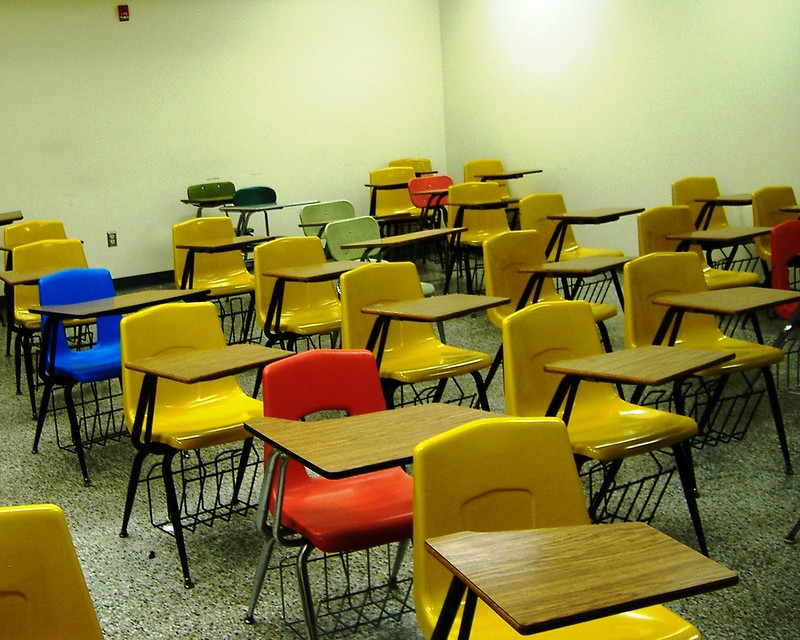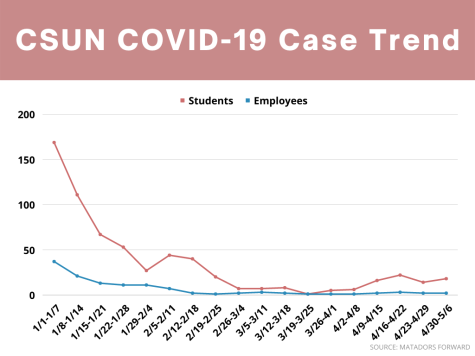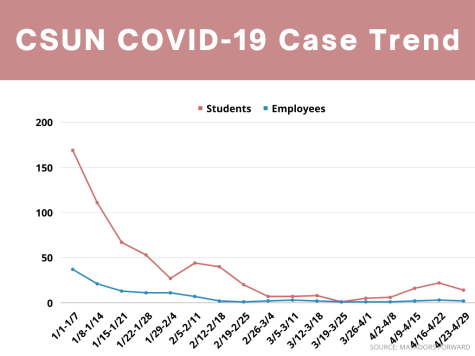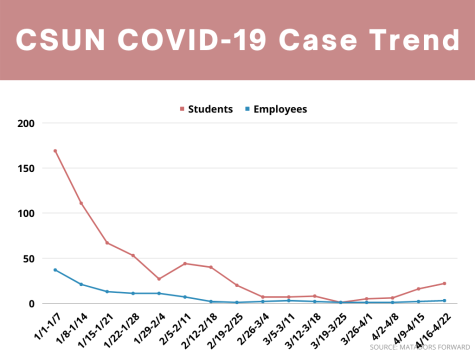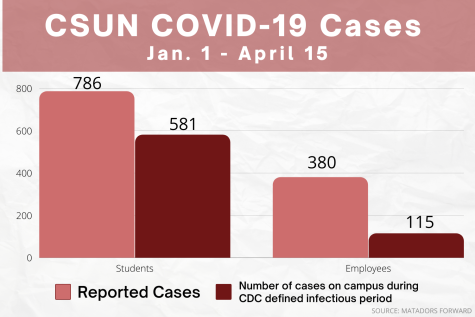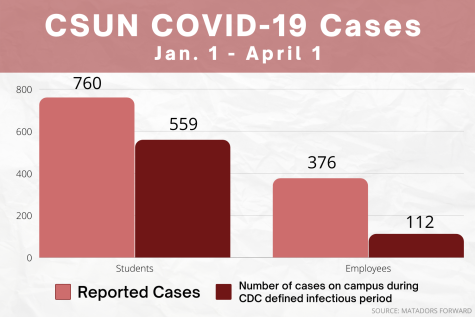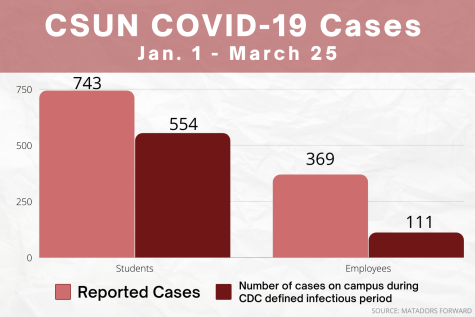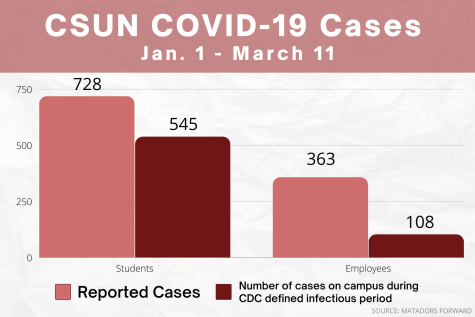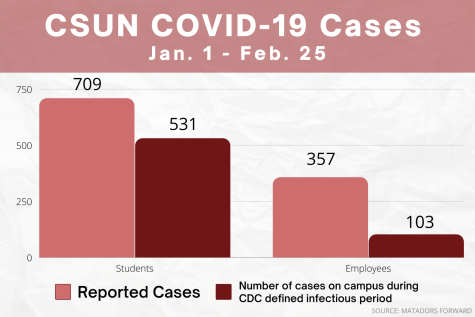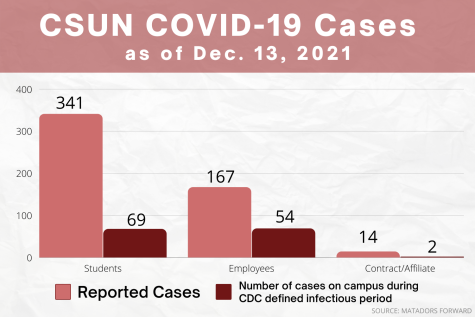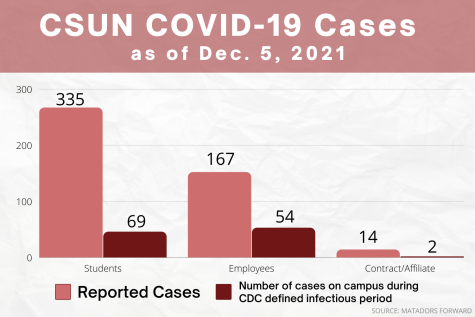What CSUN student teachers have to say about online learning, reopening of schools
Student teachers looking to get their teaching credentials have had to adapt to the pandemic, teaching students from home.
March 29, 2021
The conversations on reopening schools across the country has focused on the voices of concerned parents and teachers, as policy makers attempt to recreate a new normal for students.
Yet student teachers’ voices on the issue are often unheard.
Student teachers help out with teaching, either leading the lesson plan of the day or observing the class, in hopes that someday they can teach their own. They take on several responsibilities of a teacher like grading, preparing lessons, or meeting with parents, except they juggle their own student responsibilities as well.
Student teachers have to complete a minimum of 600 hours at a school where they are mentored by a teacher — a state requirement that needs to be met in order for a student to receive teaching credentials, according to the student teaching handbook.
To become a teacher in California, students must receive their credentials through state preparation programs and institutions approved by the California Commission on Teacher Credential. CSUN is one of those Commission-approved institutions, where 96% of students pass to receive their credential license, according to data from the U.S Department of Education 2018 Title II report.
However, as the COVID-19 pandemic rampaged throughout the world, no one was prepared to teach virtually, not even student teachers who had to embrace their very first experience teaching through a screen.
Katherine Willcox, 25, Tyler Kimball, 27, and Evann Carter, 23, and an anonymous student teacher, are students working their way through the credentialing process under the College of Education at CSUN. Most of them have already completed a semester prior to student teaching except for Carter, who is in her first semester of student teaching started in this semester.
Missing the full experience
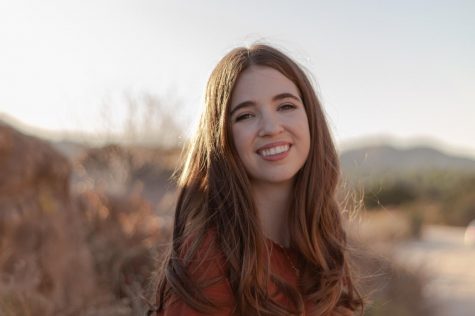
Carter, teaches choir for 8th graders at Rancho Pico Junior High School. Her passion for participating in choir groups motivated her to pursue a career in music education where she hopes she can give choir students the fun experiences she had.
Carter had to grieve for her first semester of student teaching, because none of this is what she wanted. In a normal setting, the students sing and jam out and the teacher can give them feedback, but the experience has been disrupted through virtual learning.
Carter says the hardest part about this experience is the accountability.
“We can’t force kids to have their cameras on, it’s a choice at this point, I can’t make kids engage if they don’t want to,” Carter said.
To encourage her kids to engage, she’ll tell her students that she appreciates them when they have their cameras on because it helps her teach them better, something she learned from her seminar class where other student teachers talk about their experiences at other schools.
Carter’s students come from higher socioeconomic backgrounds, meaning they have the resources like internet access that allows them to stay at home.
Willcox, on the other hand, teaches for three periods of 9th grade English at Francisco Bravo Medical Magnet High School, where many of her students don’t have access to devices such as a cell phone or a laptop, or personal space.
“At first, it was a big struggle, I couldn’t get the hang of it. I didn’t feel like teaching was for me. I couldn’t connect with the students,” Wilcox said.
However, she was able to understand her student’s situation after reading letters that they wrote, where they shared how they are mentally and emotionally. By beginning her classes everyday with just asking her students how they are and what’s going on with their life, she’s felt a better connection with them.
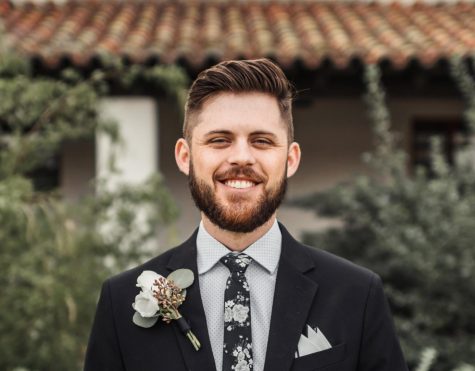
Kimball teaches one period of jazz class three times a week at Calabasas High School. While he enjoys what he’s doing and sees that he’s making progress, he said a lot of the things done in a normal class setting are irreplaceable like listening to each other as a group.
To start the class, his students do warm-ups on their instruments like practicing scales with their microphones on mute. The only sound Kimball hears is the string bass of his mentor teacher as they assume everyone else is playing along like if they were back in the classroom.
On an average day, about two-thirds of his students have their cameras on, but not all are responsive. The ensemble is there, but they can’t experience playing as a group.
Kimball, Willcox and Carter all say that virtual learning is just not the same.
A CSUN student teacher, who asked to remain anonymous, teaches 9th grade Mild Moderate Special Education students at a public school in Los Angeles Unified School District, and said that the disconnect is a challenge. While some students may have their camera on, at times all she sees are their foreheads, making it hard for her to read facial expressions.
Attendance has been tough on her students. In one of her classes, she’s only seen two of nine enrolled students on Zoom. She knows some of her students choose work instead of school, a common occurrence as the pandemic continues to disproportionately affect lower-income families.
A Learning Curve
If it wasn’t for virtual learning, these student teachers wouldn’t have gained another unique experience of teaching with technology.
“I’ve gotten really good at writing on a whiteboard with a mouse” said the anonymous student teacher. She said some of the tools she’s enjoyed using have been Jamboard, Flipgrid, Nearpod and PHET simulations. These tools allow teachers like her to make their lessons more interactive where students can produce their own slides, make videos and learn science lessons through simulations.
She finds it helpful that students are learning essential skills such as typing and how to access Google. She’s even taught them how to use the phrase “brain fart,” a new phrase that opened a can of giggles in her class, when she experienced one.
Kimball said he’s learned how to manage Google suite and teaching in other digital formats that otherwise he would have not learned if it weren’t for the pandemic. He calls this a unique experience he can talk about when he’s older.
Carter said she felt music technology was glossed over in her undergrad whereas now that she’s teaching herself and her students to record, edit and chop their voice through Digital Audio Workshop software.
A memory that sticks out the most for Carter was when her lesson plan didn’t go well — a challenge that comes with virtual learning that she wasn’t prepared for. Yet, she’s learned to be kinder to herself when unexpected things occur.
On top of navigating virtual teaching, these student teachers learned the importance of creating a routine where they can create time for themselves outside of school and student teaching.
“It’s unhealthy to work everyday,” Kimball said. A typical day for Kimball starts with his student teaching, then a break until his class at CSUN on Zoom, followed by dinner and lesson planning for the next day.
Willcox said it’s been easier for her to have days solely focused on teaching and other days focused on her own classes, leaving weekends free. All of the student teachers say finding balance is key.
The case for and against reopening schools
The number one reason all student teachers agreed on why students should go back to school is keeping students accountable.
Students would be logged on to Zoom, but parents may find them watching TV or far away from their device, Willcox and the anonymous student teacher recounted.
Willcox pointed out that her students are missing out on social interaction and they shared that they feel burnt-out and that they miss school. Her school is set to reopen by the end of April.
The anonymous student teacher said she doesn’t see why they should go back if they have to keep their distance from students. “How will they monitor the classroom and check on students from six feet apart?” she said. “It’s just like virtual learning.”
The uneven vaccine rollout brings out hesitancy in others.
Kimball lives with his wife, who is disabled. While he’s fully vaccinated, his wife only had the first dose of the vaccination. He thinks about her health and has considered living separately for the meantime once his school reopens.
Kimball said that despite social distancing protocols and the improving vaccination process, he is still worried about the chance of others contracting the virus.
“One the one hand just like everybody my heart bleeds everyday for just how frustrating this format is everyday it’s not a typical experience for kids and teachers. But a lot of things have not yet happened to make it a safe environment. It’s sort of happening. It’s getting better but it’s not completely here,“ Kimball said.
His school, which reopened on March 22, divided students into three cohorts and implemented a rotation schedule where students who opt-in will meet in person for three hours.
Kimball said the school’s in-person guidelines force him and his mentor to start from scratch and interrupts the flow they have with their class. But his mentor reminds him that they can handle anything. “We’re improvisers. We’ll make what we can.”
Carter points out that the timing of reopening doesn’t align with vaccine distribution. While she was lucky enough to become fully vaccinated before her school set to reopen on March 29 for blended-learning, she knows many who barely have had their first dose.
“I don’t know what to expect. I trust my students are going to wear the mask. I don’t fully trust if my students are going to stay home if they’re sick,” Carter said.
She said she won’t be around her students without a mask and will be stringent on hand washing since she lives with her 63 year-old father.
“You shouldn’t make teachers feel guilty for their health of getting vaccinated,” Carter said.
But at the end of the day, all these student teachers care about is the safety of their students and want them to have a positive learning experience.
“I hope they know how much I care about them on an individual level. I get it, just a student teacher for a semester. I thank them for trusting me with their education,” Carter said.
